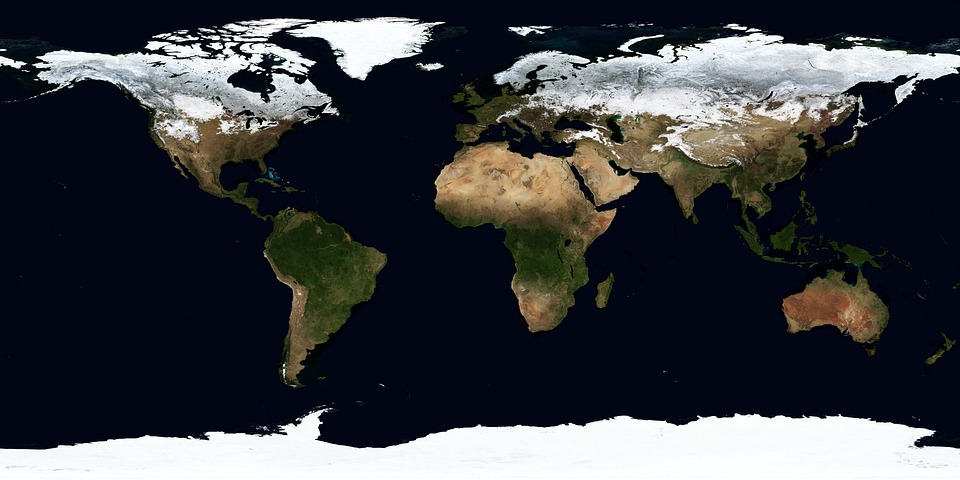What Type of Climate Is Created by the Norwegian Current?
The Norwegian Current is a significant warm ocean current that flows northward along the coast of Norway, originating from the North Atlantic Drift. This current plays a crucial role in shaping the climate of Norway and surrounding areas, leading to milder conditions than would typically be expected at such high latitudes.
What is the Norwegian Current?
The Norwegian Current is a warm, northward-flowing current that is part of the larger North Atlantic Current system. It travels along the Norwegian coastline and extends into the Barents Sea. The current primarily consists of:
– Warm water from the North Atlantic Drift
– Outflow from the Baltic Sea, which contributes significant freshwater input
– Interaction with Arctic waters, which influences its temperature and salinity dynamics
The flow dynamics of the Norwegian Current are characterized by its relatively slow movement, allowing it to release heat into the atmosphere effectively. Research indicates that while it could flow rapidly, its chaotic nature enables a longer transit time, allowing for greater heat transfer to the surrounding air[2][3].
How Ocean Currents Influence Climate
Ocean currents are vital in regulating climate by redistributing heat across the globe. They can significantly affect coastal temperatures, precipitation patterns, and overall weather systems.
– Warm currents, like the Norwegian Current, typically lead to milder coastal climates by raising temperatures and increasing humidity.
– Cold currents can have the opposite effect, leading to cooler coastal areas compared to inland regions.
This distribution of heat helps moderate temperature extremes, making coastal regions more habitable compared to areas further inland at similar latitudes[1][5].
Climate Effects of the Norwegian Current on Norway
The influence of the Norwegian Current on Norway’s climate can be summarized as follows:
– Mild Coastal Climate: The current brings warmer waters from the North Atlantic, resulting in a temperate climate along Norway’s western coast.
– Warmer Winters: Despite its high latitude, Norway experiences much milder winters compared to other regions at similar latitudes (e.g., parts of Canada and Russia). The average winter temperature in areas influenced by the current is around 3.5 °C[3][9].
– Increased Precipitation: The warmth of the current enhances evaporation rates, leading to higher humidity and precipitation levels. This is particularly evident in western Norway, where cities like Bergen are among Europe’s rainiest[4].
– Ice-Free Ports: The warming effect keeps many ports ice-free during winter months, facilitating year-round maritime navigation[2][3].
Impact of the Norwegian Current on Surrounding Areas
The effects of the Norwegian Current extend beyond Norway itself:
– Svalbard and Barents Sea: The warmth from this current contributes to relatively mild conditions in Svalbard and affects sea ice coverage in the Barents Sea. This has implications for local ecosystems and wildlife[4][9].
– Northern European Climate: Coastal regions in Northern Europe, including parts of the UK and Scandinavia, benefit from the warmth carried by the Norwegian Current, resulting in more temperate conditions compared to inland areas at similar latitudes[2][3].
Norwegian Current and Global Climate Patterns
The Norwegian Current is integral to global heat distribution as part of thermohaline circulation. Its influence extends to:
– Arctic Ice Melt: Warmer waters from this current affect sea ice formation in the Arctic region, contributing to seasonal ice retreat during warmer months[4][9].
Challenges and Climate Change
Climate change poses significant challenges to the stability and strength of the Norwegian Current:
– Impact on Strength and Temperature: Rising global temperatures may alter both the strength and temperature of this current, potentially leading to cooler conditions in Norway if it weakens.
– Potential Regional Climate Shifts: Changes in the current could disrupt established weather patterns, impacting maritime industries and local ecosystems reliant on stable climatic conditions[6][7].
Conclusion
The Norwegian Current plays a crucial role in creating a mild and wet coastal climate for Norway. Its influence extends beyond national borders, impacting regional climates across Northern Europe and contributing to global climate patterns. Understanding these dynamics is essential as we face ongoing climate change challenges that may alter this vital oceanic system.

Kyle Whyte is a notable scholar and professor at the University of Michigan, holding positions such as the George Willis Pack Professor in the School for Environment and Sustainability and Professor of Philosophy. Specializing in environmental justice, his work critically examines climate policy and Indigenous peoples’ ethics, emphasizing the nexus between cooperative scientific endeavors and Indigenous justice. As an enrolled Citizen Potawatomi Nation member, he brings a vital perspective to his roles as a U.S. Science Envoy and member of the White House Environmental Justice Advisory Council. His influential research is supported by various prestigious organizations including the National Science Foundation, and disseminated through publications in high-impact journals. Kyle actively contributes to global Indigenous research methodologies and education, with affiliations to numerous institutes and societies dedicated to traditional knowledge and sustainability. Recognized for his academic and community engagement, Kyle has earned multiple awards and served in various visiting professorships. His efforts extend to leadership positions on boards and committees focused on environmental justice nationwide.
